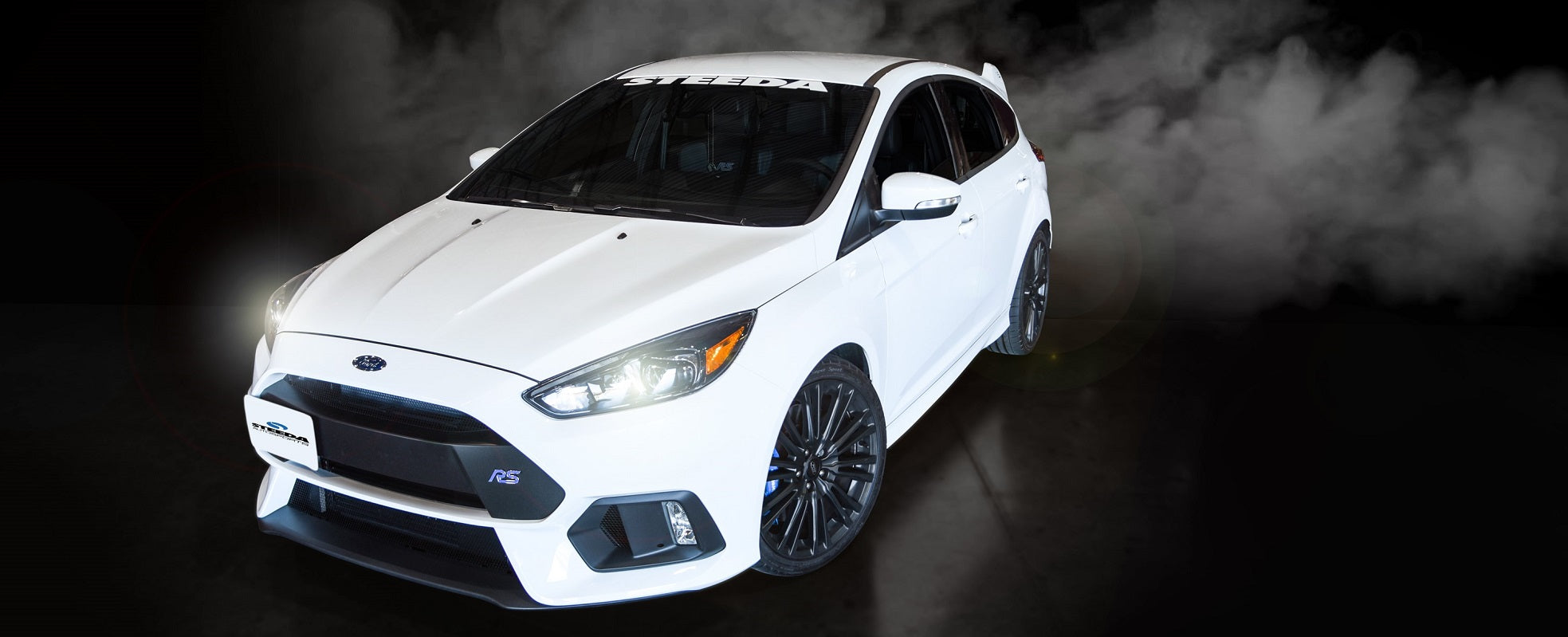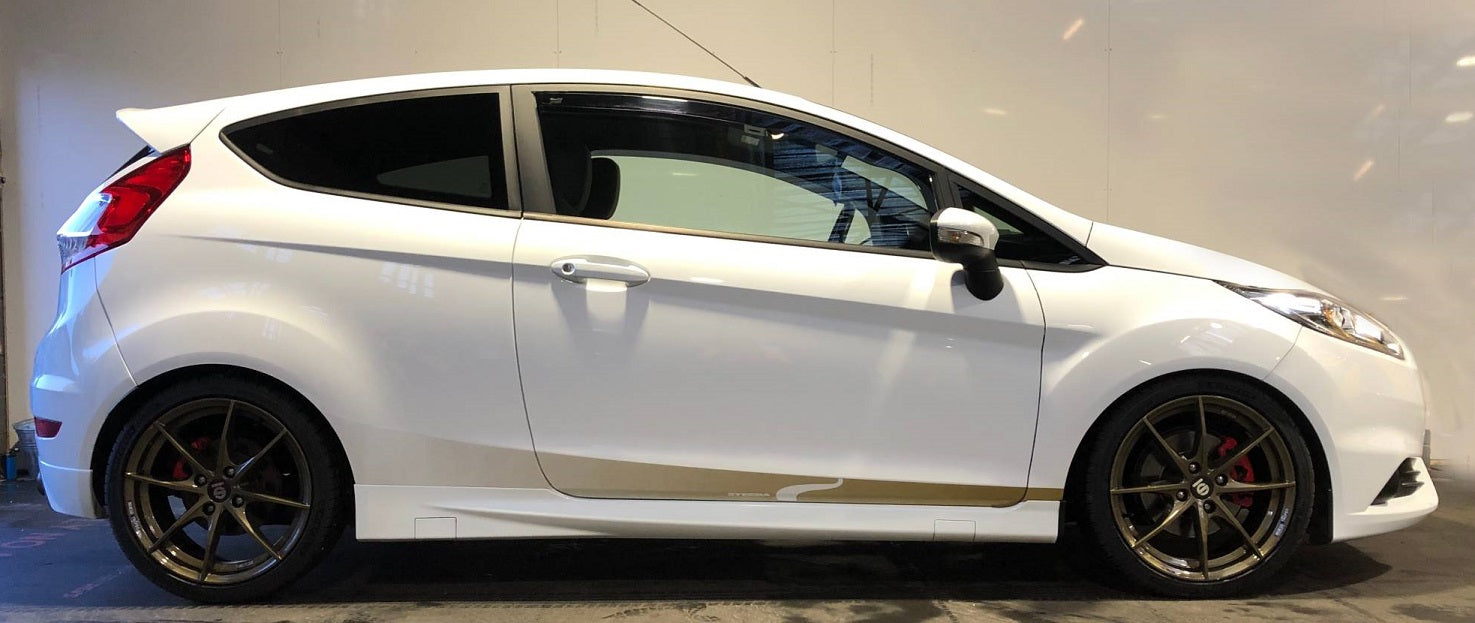
Steeda "Spring Guide" for Mustangs - Which Spring is Right for you?
Form & Function: In the world of Mustang performance, every last tenth can mean the difference between winning and losing. Having the correct lowering spring product knowledge in order to obtain your goals can give you a clear edge over the competition. One of the biggest questions that every Mustang enthusiast has to ask themselves when getting ready to add performance suspension is what are my goals for the car?
After weeks of gathering research, looking at multiple brands, and seeing so many variations of springs out there, it can be quite frustrating. No need to fear, Steeda is here to help!
There are many different types of spring rates for various reasons.
- They can offer the user more confidence and a stable ride.
- Give your Mustang a lowered stance with improved roll control.
- Provide more feedback to the driver on what exactly your Mustang is doing.
- Lastly, give you the winning edge at the track for better handling and stability.
Linear Springs - Dual Rate - Progressive Springs - Roll Control.. Which Is Best?
1. What Are Linear Springs?
Linear springs have a constant, or static, spring rate throughout the entire spring, from top to bottom. These springs provide a much more direct feeling through the suspension as it is compressed, this is due to the constant rate of feedback the spring is giving against your chassis, regardless of suspension travel.
With a linear spring, you’ll be able to have a much more predictable ride in your Mustang. In this instance, a linear spring can be used very well while on a road course or autocross. You will feel a more constant, predictable connection through the steering wheel, on exactly what the car is doing as it carves through the corners.
Here is a scenario to think about. You’re going through a sweeping corner at a high rate of speed. The direct resistance from the springs that your Mustang is receiving through its shocks is constant, regardless of how hard you push the car through that turn. This makes for a much more predictable ride, but it also has its setbacks.
Linear springs are a one-trick-pony. If you’re looking for an all-out performance on the track or autocross course, then you can choose a stiffer linear spring rate that fits the bill. However, with that constant stiff spring rate, you’ll be sacrificing ride quality when you’re cruising down the highway. The same thing goes if you’re looking for a comfortable ride. You’ll be sacrificing handling potential since you’ll need a softer spring rate for more comfort.
That’s where progressive springs come in! You’ll get the best of both worlds. A softer spring rate that allows you to ride in comfort until the spring starts to compress, where the rate gets stiffer and gives more feedback to confidently handle that next corner.

2. What Are Progressive Springs?
Progressive rate springs provide a variable spring rate from one side of the spring to another. These springs are most ideal for those who are looking for an all-around solution to lowering their Mustang and increasing handling capability, all without sacrificing ride quality.
Progressive springs have a softer spring rate that is utilized when the car is cruising down the highway with minimal changes in travel. However, when you take the next exit and begin pushing the car on your favorite backroad, the spring will continue to compress and travel more. As the spring compresses further, the spring rate will increase providing those confidence inspiring handling attributes that we know and love from a stiff linear spring. It’s truly the best of all worlds for those who street and track their vehicle.
A progressive spring can be a constantly increasing rate, meaning the spacing between the coils has a constantly increasing rate. By using this type of progressive spring you will allow more control over the axle during acceleration. What this allows is for the axle to not wrap under hard cornering, launching, and acceleration.

3. What Are Dual Rate Springs?
These are a new type of spring where the rate of the springs has two different linear variations within the spring that are connected to one another. These springs are much more sophisticated than a typical linear spring. A dual-rate spring will provide a much better rate of transition when the spring is under compression and hard load. It’s important to note that this type of progressive spring is more oriented towards high-performance driving. Such as road (track!) -racing and autocross driving. In a sense a Dual Rate spring is both a linear type and a progressive type spring.
Some of the variables you need to consider before you choose a dual rate spring are that they will have less overall deflection when compared to a linear spring. The reason for this is that the secondary rate coils are more tightly packed together at the top, creating the two springs rates of a dual-rate spring. Most of the dual rate springs that are designed and engineered for high performance driving as well as competition GT racing.
A dual rate spring unites a relatively low initial spring rate, absorbs minor undulations, increases grip with a precise transition point, and then transitions into a secondary higher spring rate to improve roll control during cornering.

4. What Is Roll Control?
Your vehicle’s roll control is dictated by two major suspension components: the springs and sway (or anti-roll) bars.
Roll control is defined as the ability of your vehicle’s suspension to handle the g-forces that a corner throws at your car.
A linear Spring rate will compress as you roll into a turn with the spring trying to prevent body roll through its spring rate, however as the spring is linear, the unloaded side will be pushing up with equal force, increasing body roll. On the contrary progressive or dual-rate spring will increase spring rate as it is compressed, fighting that inevitable body roll. As you would enter that same curve at the same speed, the Mustang would be rolling onto a higher rate spring. The higher spring rate will aid the roll control on the outside wheels of that vehicle throughout that turn. However, the inside wheels will still be running the uncompressed lower spring rate, thus pushing up less and contributing to less body roll, keeping the car cornering flatter on its wheels.
Which Spring Should I Choose?
As Mustang enthusiasts, we must always ask ourselves the question of what is the goal or objective for the car?
Three variables are most considered when choosing springs:
- Ride Quality
- Performance
- Ride Height
Whether you decide on a linear spring, which will only provide one constant spring rate but a more sporty feel, in comparison to a progressive spring, which will provide the best ride quality while giving you amazing performance when you need it. And finally, a dual-rate spring, which gives you the best of both worlds between a linear and a progressive spring.
They also offer a variety of different ride heights from our "extreme drop" 2" lowering springs to the linear and progressive 1" drop, to our dual rates offering a .075" drop. If desired these heights can be tweaked (upwards) through our front and rear spring spacers.
After all these variables are answered, then you will be able to decide which type of spring you will need to meet you Mustang suspension goals!
No matter what type of spring you end up deciding on, just know that you will be upgrading your Mustang's ride quality, handling, and overall performance on the street or at the track!
Linear vs Progressive vs Dual Rate Springs

READ OUR SPRINGS PRODUCT GUIDE PDF HERE
Article Source: Steeda.com


